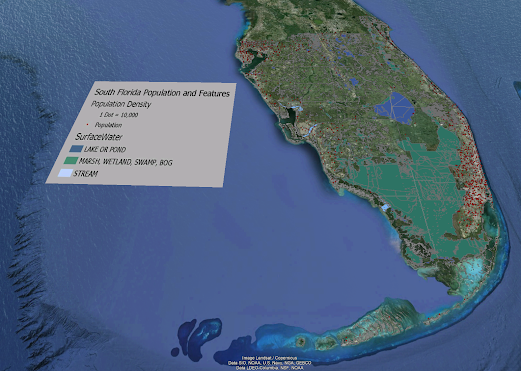Isarithmic Mapping
For this week's assignment we were tasked with making a Isarithmic Map using data from USDA & the PRISM group at Oregon State University. PRISM is an analytical model that uses point data and an underlying grid such as a digital elevation model (DEM) or a 30-year climatological average (1981- 2010 average) to generate gridded estimates of monthly and annual precipitation and temperature (as well as other climatic parameters). Grids were modeled on a monthly basis. Annual grids of temperature are produced by averaging the monthly grids and summing for precipitation. The raster dataset provides derived average annual precipitation in inches according to a model using point precipitation data for the 30-year period of 1981-2010.
I used two different symbolization approaches Continuous & Hypsometric tint. Continuous symbology shows a smooth transition for all values, where each point is shaded with a color tone proportional to the data value at that point instead of breaking the values into range groups. The higher precipitation areas were shaded in blue then slowly progressing to green/yellow for moderate precipitation and then finally red for areas that receive very little rain. There is no breaking the values into ranges and continuously flow one color to the next. Hypsometric tinting is a method used in cartography to indicate elevation. It involves placing colors between contour lines (lines of equal elevation) on a map or for this lab, annual precipitation rates. These colors can be shown as bands in a graduated scheme or applied directly to the contour lines themselves. The map above shows the use of hypsometric tinting being used and is guided with the use of contour lines.




No comments:
Post a Comment